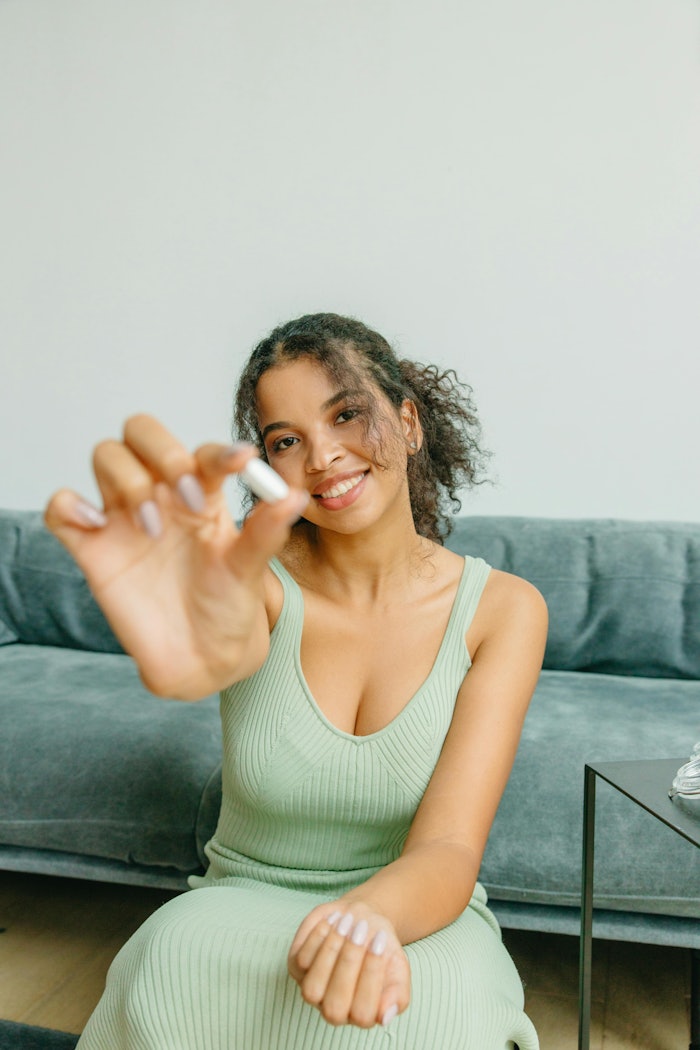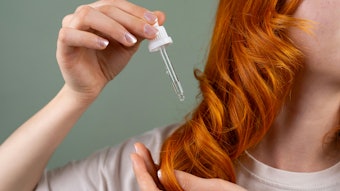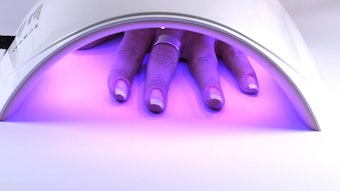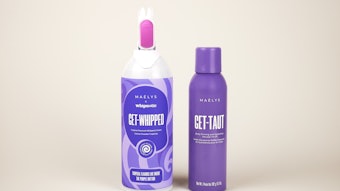
Predictions are notoriously difficult, and no less so in the age of accelerating AI advancements, whiplash TikTok trends, and ever-evolving regulatory and economic conditions. But, if you look closely at the trendlines and the narratives behind emerging innovations, a wide range of trends and industry-shaping forces begins to emerge. As we head into a new year, Global Cosmetic Industry assembled thought leaders in the worlds of ingredients, marketing, packaging, manufacturing and more to decode where product innovation and consumer behaviors are heading in 2026. Taken together, these voices highlight an array of growth opportunities and challenges facing beauty in the year to come.
This article is only available to registered users.
Log In to View the Full Article
Predictions are notoriously difficult, and no less so in the age of accelerating AI advancements, whiplash TikTok trends, and ever-evolving regulatory and economic conditions. But, if you look closely at the trendlines and the narratives behind emerging innovations, a wide range of trends and industry-shaping forces begins to emerge. As we head into a new year, Global Cosmetic Industry assembled thought leaders in the worlds of ingredients, marketing, packaging, manufacturing and more to decode where product innovation and consumer behaviors are heading in 2026. Taken together, these voices highlight an array of growth opportunities and challenges facing beauty in the year to come.
- Flashback: 7 Beauty Predictions for 2025
The 2026 Beauty Innovation Agenda
The Brain-Skin Connection: Neuro Skin Aging, Emotional Wellness and Multifunctional Formulations
Amandine Scandolera, head of biological evaluation, Givaudan Active Beauty
 Amandine Scandolera, head of biological evaluation, Givaudan Active Beauty.Givaudan
Amandine Scandolera, head of biological evaluation, Givaudan Active Beauty.Givaudan
Michael Lull, director of marketing, Ashland
 Michael Lull, director of marketing, Ashland.Ashland
Michael Lull, director of marketing, Ashland.Ashland
Looking ahead, I anticipate a surge in demand for products that not only support skin health but also enhance mood and reduce stress—positioning emotional care as a functional benefit. From a formulation standpoint, multifunctional ingredients will be key. These materials empower brands to create differentiated, effective products that deliver elevated, seamless, and more gratifying user experiences across a wide range of applications.
Beyond Anti-Aging: Longevity & Prejuvenation
Chris Valencius, chief marketing officer, Evolved By Nature
 Chris Valencius, chief marketing officer, Evolved By Nature.Evolved By Nature
Chris Valencius, chief marketing officer, Evolved By Nature.Evolved By Nature
This shift is influencing a wide range of consumer behaviors, driving the "skinification" of everything, from makeup to body care, as people look for skin care benefits across all product categories. At the same time, modern lifestyles and environmental stressors are making sensitive skin the norm, prompting innovation in gentle yet effective formulas.
Within this longevity mindset, consumers are also gravitating toward biotech-driven solutions that align with both skin health and sustainability. They recognize that long-term personal wellness isn’t possible if the planet is on fire.
Even the growing popularity of aesthetic procedures like fillers and microneedling, especially among younger consumers, reflects the overall longevity and prejuvenation trend. These treatments blur the lines between cosmetics and dermatology, increasing demand for science-backed, high-efficacy products that can extend or even replace in-office procedures with visible results at home.
Longevity’s Frontier: Navigating Fair Product Claims in a Rapidly Evolving Market
Alec Batis, co-founder of Sweet Chemistry Labs
 Alec Batis, co-founder of Sweet Chemistry Labs.Sweet Chemistry
Alec Batis, co-founder of Sweet Chemistry Labs.Sweet Chemistry
Marketers will need to be very careful with claims veering into drug claims, but it's fairly certain they will make every attempt to get creative.
The End of 'More Is Better': Biotech, Skin Care & Precision Dosing
Joshua Britton, Ph.D., founder and CEO, Debut
 Joshua Britton, Ph.D., founder and CEO, Debut.Debut
Joshua Britton, Ph.D., founder and CEO, Debut.Debut
By contrast, biotech-derived molecules are engineered for precision and potency, delivering measurable effects at dramatically lower concentrations, typically below 0.5%. This approach mirrors pharmaceuticals, where the precise dosage is critical: too much ibuprofen can be harmful, but a carefully determined amount provides real benefit.
The same principle applies to skin care. With biotechnology, active ingredients are optimized for efficacy at the lowest effective dose. By designing molecules with precision at the molecular level, scientists can create actives that target specific biological pathways in the skin with far greater accuracy than traditional ingredients. The result is optimal performance with minimal exposure to the harshness that often accompanies high percentages.
As regulators in the EU continue to tighten restrictions on legacy ingredients such as retinol and kojic acid, and consumers increasingly identify as having sensitive skin, the demand for high-performing, gentle and targeted solutions will only intensify. Biotechnology answers that demand, delivering smarter, safer, science-backed ingredients validated by rigorous clinical testing and data.
The Rise of Post-Procedure Skin Recovery Products
Anna Balaguer, global trend manager, Provital
 "In a world of immediacy where we do not have any patience for anything, products that accelerate the recovery of skin after any procedure—surgery, lasers, injections—will grow in options, formats and results," says Anna Balaguer, global trend manager, Provital.Provital
"In a world of immediacy where we do not have any patience for anything, products that accelerate the recovery of skin after any procedure—surgery, lasers, injections—will grow in options, formats and results," says Anna Balaguer, global trend manager, Provital.Provital
Biotech’s Credibility Advantage
Michelle Chavez, chief commercial officer, Accupac
 Michelle Chavez, chief commercial officer, Accupac.Accupac
Michelle Chavez, chief commercial officer, Accupac.Accupac
This shift represents a profound change in the story beauty tells. Bio-innovation reframes personal care as part of the wellness and vitality movement, tapping into cultural momentum around healthspan and preventative care. For brands, this means moving from novelty claims to biologically aligned solutions that promise real restoration and resilience. Consumers increasingly see biotech as the trusted partner that can future-proof their skin and hair, making bio-innovation not just a scientific advance, but a redefinition of what beauty means in the decade ahead.
Skin Care's New Superheroes
Jeffrey Martin, director of marketing, FP Labs and Federal Package
 "A range of exciting new ingredients like exosomes, peptides, adaptogens, glycogen and more will provide skin care brands and manufacturers with a new world of high-tech possibilities," says Jeffrey Martin, director of marketing, FP Labs and Federal Package.Anusorn at Adobe Stock
"A range of exciting new ingredients like exosomes, peptides, adaptogens, glycogen and more will provide skin care brands and manufacturers with a new world of high-tech possibilities," says Jeffrey Martin, director of marketing, FP Labs and Federal Package.Anusorn at Adobe Stock
Proof Over Promise: Evidence-Based Beauty
Michelle Chavez, chief commercial officer, Accupac
 "It’s no longer enough to focus on long-term outcomes; products must deliver instant sensorial proof—a cooling sensation, a visible glow, or a firming effect—while also carrying the weight of clinical data over time," says Michelle Chavez, chief commercial officer, Accupac.8pCarlos Morocho at Adobe Stock
"It’s no longer enough to focus on long-term outcomes; products must deliver instant sensorial proof—a cooling sensation, a visible glow, or a firming effect—while also carrying the weight of clinical data over time," says Michelle Chavez, chief commercial officer, Accupac.8pCarlos Morocho at Adobe Stock
This is changing the way brands formulate. It’s no longer enough to focus on long-term outcomes; products must deliver instant sensorial proof—a cooling sensation, a visible glow, or a firming effect—while also carrying the weight of clinical data over time. Consumers expect both the “wow” they can feel in the moment and the results they can measure weeks later. For brands, the opportunity is enormous: turn proof into a differentiator, design every texture and effect as a trust signal, and communicate in the language of results, not rhetoric. In today’s market, proof isn’t just a feature—it’s the foundation of loyalty.
Science-Driven IP is the Next Frontier
Alec Batis, co-founder of Sweet Chemistry Labs
!['[T]he concept of 'science-backed' came to be where brands needed to show their expertise went further than 'no' lists, creating formulas with active ingredients that had proven efficacy,' says Alec Batis, co-founder of Sweet Chemistry Labs. 'That resulted in many new brands essentially donning a white lab coat in marketing photos in order to appear 'science-backed.'”](https://img.gcimagazine.com/mindful/allured/workspaces/default/uploads/2025/10/adobestock-487074598.SsCfp0xVwN.jpg?auto=format%2Ccompress&fit=max&q=70&w=400) "[T]he concept of 'science-backed' came to be where brands needed to show their expertise went further than 'no' lists, creating formulas with active ingredients that had proven efficacy," says Alec Batis, co-founder of Sweet Chemistry Labs. "That resulted in many new brands essentially donning a white lab coat in marketing photos in order to appear 'science-backed.'”WinWin at Adobe Stock
"[T]he concept of 'science-backed' came to be where brands needed to show their expertise went further than 'no' lists, creating formulas with active ingredients that had proven efficacy," says Alec Batis, co-founder of Sweet Chemistry Labs. "That resulted in many new brands essentially donning a white lab coat in marketing photos in order to appear 'science-backed.'”WinWin at Adobe Stock
Now, the shift has evolved towards “science-driven,” which means that brands will increasingly need to own their IP. The reason for this is because with the advent of AI, savvy content creators and consumers will be able to easily find out if a company is creating “marketing complexes” of existing ingredients and calling them “proprietary” vs. having their own technology. Having owned IP may be one of the only ways to demand higher prices vs. commodity prices.
In order to have your own IP, brands will need to either have true R&D, or purchase technologies with exclusive rights from suppliers and different biotech popup companies.
2026 Consumer Perspectives
Smart Shoppers, Tight Budgets: AI and Hero Products Are Shaping Spending
Christine Staples, CEO, Cohere Beauty
 Christine Staples, CEO, Cohere Beauty.Cohere Beauty
Christine Staples, CEO, Cohere Beauty.Cohere Beauty
With economic pressures mounting and consumer sentiment declining (-18.45% annualized drop since Jan 2024, according to the University of Michigan), shoppers will be hyper-focused on value. Armed with AI tools that compare formulations and ingredients in seconds, consumers are increasingly laser-focused on finding products that are truly efficacious and prove performance at the right price.
Beauty & Sustainability: Consumers Demand More
Jeffrey Martin, director of marketing, FP Labs and Federal Package
Beauty consumers are incredibly savvy when it comes to sustainability. In the coming years, the conversation will continue to evolve. Environmentally friendly initiatives will become far more nuanced as consumers dig deeper into the nature of individual ingredients, packaging, sourcing, and demand hard data and accomplishments on sustainable practices from companies, not just promises.
The "Sephora Kids" Have Arrived: Gen Alpha is Taking Over the Beauty Industry
Christine Staples, CEO, Cohere Beauty
 "Gen Alpha is no longer an emerging consumer segment," says Christine Staples, CEO, Cohere Beauty. "At ages 7-14, they're already driving nearly half of skin care sales growth, with the average Gen Alpha consumer spending $324 annually on beauty."Olha Tsiplyar at Adobe Stock
"Gen Alpha is no longer an emerging consumer segment," says Christine Staples, CEO, Cohere Beauty. "At ages 7-14, they're already driving nearly half of skin care sales growth, with the average Gen Alpha consumer spending $324 annually on beauty."Olha Tsiplyar at Adobe Stock
The Underserved 50-Plus Consumer
Christine Staples, CEO, Cohere Beauty
 "Women over 50 represent 40 million U.S. consumers with $15 trillion in purchasing power, yet they remain largely invisible in beauty marketing," says Christine Staples, CEO, Cohere Beauty.Matilda Wormwood at Pexels
"Women over 50 represent 40 million U.S. consumers with $15 trillion in purchasing power, yet they remain largely invisible in beauty marketing," says Christine Staples, CEO, Cohere Beauty.Matilda Wormwood at Pexels
2026's Top Category Growth Opportunities
K-Beauty: Reshaping Beauty from Head to Toe
Addison Cain, senior insights and marketing lead, Spate
 "K-beauty, with +30.2% predicted YoY growth, has already redefined skin care globally—snail serums and pimple patches put it on the map," says Addison Cain, senior insights and marketing lead, Spate. "But it’s no longer just about the 10-step routine."Anua
"K-beauty, with +30.2% predicted YoY growth, has already redefined skin care globally—snail serums and pimple patches put it on the map," says Addison Cain, senior insights and marketing lead, Spate. "But it’s no longer just about the 10-step routine."Anua
The Inside-Out Glow-Up: Two Are Better Than One
Lorne Lucree, founder, Quiet Coyote
 "One of the biggest shifts I see ahead is the continued emergence of inside-out systems: topical and ingestible products intentionally developed to work in tandem," says Lorne Lucree, founder, Quiet Coyote.Lorne Lucree
"One of the biggest shifts I see ahead is the continued emergence of inside-out systems: topical and ingestible products intentionally developed to work in tandem," says Lorne Lucree, founder, Quiet Coyote.Lorne Lucree
Consumers are no longer just dabbling in supplements—they increasingly believe in the power of ingestibles to influence skin, scalp, and overall beauty outcomes. The next step is ingredient alignment: the same actives delivered through both a topical serum/cream and an ingestible capsule/powder, sending a unified signal of support to the body.
Each format can be powerful on its own—but the magic happens when they’re designed together. A topical serum that hydrates and brightens the skin, combined with a companion supplement that nourishes from within, creates results neither could achieve alone. It also gives consumers clarity and confidence: instead of piecing together a mix of products, they can trust a paired system that feels purposeful, simple, and elevated.
In 2026, I expect to see more brands invest in this “strong alone, better together” strategy, reframing beauty not as isolated steps, but as connected pathways that unlock visible, holistic results.
From Scalp to Strand: Science is the Future of Hair Care
Addison Cain, senior insights and marketing lead, Spate
 "Hair health, with +45.2% predicted YoY growth, is quickly moving to mainstream as concerns rise from scalp to tips," says Addison Cain, senior insights and marketing lead, Spate.Spate
"Hair health, with +45.2% predicted YoY growth, is quickly moving to mainstream as concerns rise from scalp to tips," says Addison Cain, senior insights and marketing lead, Spate.Spate
Manessa Lormejuste, beauty scientist and product developer, LORM·CO
I predict hair care in 2026 will follow a similar path as skin care, with brands leaning into science-backed positioning. Science and clinical performance will become the anchor for brand identity. Brands will increasingly lead with clinical studies, proprietary molecules, and performance-driven claims to stand out in a crowded market and provide clarity for users across hair types. Over the last decade, the category leaned heavily on natural and plant-based positioning, but that often compromised performance. Consumers, especially those with textured and natural hair, are now demanding products that truly deliver results.
 "Brands like K18, Redken, Kérastase and Olaplex dominate because users recognize their consistent efficacy across hair types and textures," says Manessa Lormejuste, beauty scientist and product developer, LORM·CO.Manessa Lormejuste
"Brands like K18, Redken, Kérastase and Olaplex dominate because users recognize their consistent efficacy across hair types and textures," says Manessa Lormejuste, beauty scientist and product developer, LORM·CO.Manessa Lormejuste
The brands that win will invest in true clinical validation and communicate results with the same rigor we expect in skin care. There is an opportunity to co-create with dermatologists, trichologists, and cosmetic chemists to reinforce the value of expert-led development. Offering consumers a salon-level experience at home, backed by science, is what will define the next generation of leaders in hair care.
Body Care's Main Character Moment
Christine Staples, CEO, Cohere Beauty
The body care category is having its skin care moment. Consumers now expect the same active ingredients, clinical efficacy, and results-driven formulations for their entire body that they've come to demand from their facial regimens. This isn't just ingredient migration. It's a fundamental shift in how we define efficacious body care, creating growth opportunities across every price point as high-performance actives become democratized beyond the face.
Consumers are strategically curating high-low beauty routines, mixing luxury formulations with accessible everyday products as high-performance ingredients migrate across all price points. Shoppers will splurge on hero treatments while filling in with affordable ingredient-forward essentials, creating a democratization opportunity that drives simultaneous growth in both prestige and mass body care markets.
The Fragrance Boom’s Next Chapter
Christine Staples, CEO, Cohere Beauty
While other segments plateau, fragrance is accelerating. We're seeing 12% growth in 2024, with fragrance now commanding 28% of total prestige beauty sales. The opportunity extends beyond traditional formats: body sprays are up 94%, hair fragrances up 32%. Perhaps most striking, teenage boys drove 26% of this growth, with TikTok becoming the primary purchase driver for Gen Z at 66%. This isn't a trend; it's a fundamental shift in how consumers discover, purchase, and engage with fragrance across demographics we previously underserved.
Erin Harmon, director of marketing, North America, Aptar
 "EuroMist’s versatility supports everything from lightweight mists to oil-based formulas, enabling dupe brands to deliver a luxurious sensory experience at an accessible price point," says Erin Harmon, director of marketing, North America, Aptar.Aptar
"EuroMist’s versatility supports everything from lightweight mists to oil-based formulas, enabling dupe brands to deliver a luxurious sensory experience at an accessible price point," says Erin Harmon, director of marketing, North America, Aptar.Aptar
This shift is amplified by the rise of influencer culture, which has transformed discount shopping from shameful into a celebrated lifestyle. Social media platforms have not only made dupes acceptable but in some cases, the preferred choice, with 32% of consumers reporting that they purchased a dupe due to influencer recommendations. One standout example is Dossier, a brand that rose to fame through TikTok for its “Impressions’ line, which offers affordable alternatives to designer scents. In a major move that signals the mainstreaming of dupes, Dossier opened its first physical store in New York. This transition from digital to brick-and-mortar retail reflects the growing legitimacy and demand for dupe fragrances in mainstream beauty culture.
 "Body mists are also seeing renewed interest, especially among younger consumers who favor layering, lightness and affordability," says Erin Harmon, director of marketing, North America, Aptar.Aptar
"Body mists are also seeing renewed interest, especially among younger consumers who favor layering, lightness and affordability," says Erin Harmon, director of marketing, North America, Aptar.Aptar
As fragrance dupes gain traction in 2026, packaging innovation is playing a critical role in elevating consumer experience. Aptar’s EuroMist sprayers are a standout of this shift, offering high-performance, fine mist dispensing rivals’ prestige packaging, without the luxury price tag. These sprayers are engineered to deliver consistent dosage, compatibility across a wide range of formulations, and customizable aesthetics, making them ideal for both mass and premium dupe brands. EuroMist’s versatility supports everything from lightweight mists to oil-based formulas, enabling dupe brands to deliver a luxurious sensory experience at an accessible price point.
Body mists are also seeing renewed interest, especially among younger consumers who favor layering, lightness, and affordability. These formulations offer a casual, everyday approach to fragrance that aligns with the rise of dupes and the decline of prestige exclusivity. 65% of consumers say they purchase these for the sake of variety. Mists are increasingly positioned as fragrance staples, allowing users to switch scents based on mood, occasion, or season, without the commitment or cost of traditional perfumes.
In parallel, travel-size formats are emerging as a major force in the fragrance category, driven by consumer preferences for convenience, affordability, and personalization. Today’s consumers are increasingly on-the-go and selective, seeking products that fit seamlessly into their fast-paced lifestyles.
Compact bottles offer more than just portability, they represent a low-risk, high-reward entry point for scent exploration. Consumers can experiment with new fragrances without committing to full-size prices, making minis ideal for both discovery and convenience.
Unit sales of mini and travel-size fragrances grew by 15%, nearly four times faster than other product sizes. This surge reflects a broader shift toward flexible beauty routines and impulse purchasing, especially among younger demographics and online shoppers.
The 2026 Beauty & Personal Care Packaging Agenda
What Consumers Want from Today’s Packaging
Sue Nichols, ICONS Group CEO
 "As we look toward 2026, beauty brands are increasingly investing in custom tooling and exclusive primary packaging designs to create a more distinctive on-shelf presence and deeper sensory connection with consumers," says Sue Nichols, ICONS Group CEO. Pictured are ICONS America custom in-mold pattern aluminum sticks.ICONS America
"As we look toward 2026, beauty brands are increasingly investing in custom tooling and exclusive primary packaging designs to create a more distinctive on-shelf presence and deeper sensory connection with consumers," says Sue Nichols, ICONS Group CEO. Pictured are ICONS America custom in-mold pattern aluminum sticks.ICONS America
Men's Grooming: Trends in Elevated Packaging
Melanie Gaudun, business development and marketing manager, Viva Healthcare Packaging (Canada) Ltd.
 wViva Healthcare Packaging
wViva Healthcare Packaging
- Extra-large tubes and wide sticks that project a masculine, modern aesthetic.
- Durable, travel-ready formats—deodorant sticks, tubes and jars—designed for active, on-the-go lifestyles.
- Premium decoration including matte and soft-touch finishes, bold metallic accents, and in-mold label graphics that reinforce a lifestyle-driven, elevated look.
In men’s care, packaging that blends practical performance with a touch of premium appeals to consumers seeking products that feel both functional and like a small, everyday indulgence.
What’s Ahead: Tubes, Sticks, and Tactile Designs
Sue Nichols, ICONS Group CEO
 Sue Nichols, ICONS Group CEO.ICONS America
Sue Nichols, ICONS Group CEO.ICONS America
 "We are ... seeing a surge in demand for tube packaging, with innovative applicators and custom designs for formulations spanning all product categories, from color cosmetics, skin care and sun care to hair care," says Sue Nichols, ICONS Group CEO. Pictured is an ICONS America tube with a pump and custom in-mold pattern aluminum sticks.ICONS America
"We are ... seeing a surge in demand for tube packaging, with innovative applicators and custom designs for formulations spanning all product categories, from color cosmetics, skin care and sun care to hair care," says Sue Nichols, ICONS Group CEO. Pictured is an ICONS America tube with a pump and custom in-mold pattern aluminum sticks.ICONS America
100% PCR PET: The Future of Sustainable Cosmetic Packaging?
Amy Pan, Epopack
By 2026, 100% PCR is likely to play an increasingly important role in sustainable cosmetic packaging.

Advances in PCR materials are overcoming historical limitations: clarity, durability, and visual appeal are now approaching the high standards expected by premium cosmetic brands. While cost and margins remain considerations, they are becoming more manageable as supply chains mature and production efficiencies improve.
Epopack is ready to help brands, contract manufacturers, and packaging traders embrace the next generation of sustainable packaging. All PET components can be crafted in 100% PCR PET bringing eco-conscious luxury to every detail. Our mono-material jars stand apart, made entirely in 100 % PCR PET for a seamless, sustainable solution that outshines multi-material alternatives. With competitive pricing and effortless integration into existing product lines, we make the transition to sustainability smooth, stylish, and cost-effective.
Domestic Manufacturing and Global Flexibility
Sue Nichols, ICONS Group CEO
 "In 2026, we foresee one of the most significant trends in beauty packaging to be an increase in demand for domestic manufacturing, paired with global flexibility, ensuring brands’ stable supply and broader options," says Sue Nichols, ICONS Group CEO.Kalyakan at Adobe Stock
"In 2026, we foresee one of the most significant trends in beauty packaging to be an increase in demand for domestic manufacturing, paired with global flexibility, ensuring brands’ stable supply and broader options," says Sue Nichols, ICONS Group CEO.Kalyakan at Adobe Stock
At the same time, we provide a wide range of Asian manufactured primary packaging through our Taiwan branch. We prioritize a global approach combining our domestic U.S. manufacturing with the flexibility and breadth of options from our international supply—providing a strategic balance to meet the evolving demands of our clients worldwide.



!['Snoopy and Woodstock are cherished [characters] across generations and pairing them with our most-loved body care essentials creates a collection that feels classic with a modern twist. This launch is about celebrating our community with something unforgettable while starting an exciting new era for the brand,' said Luis Garcia, Chief Marketing Officer.](https://img.gcimagazine.com/mindful/allured/workspaces/default/uploads/2025/10/tree-hut-peanuts-fullcollection-fall26-1x1-1253.lGcuurUszp.jpg?auto=format%2Ccompress&fit=crop&h=191&q=70&w=340)









